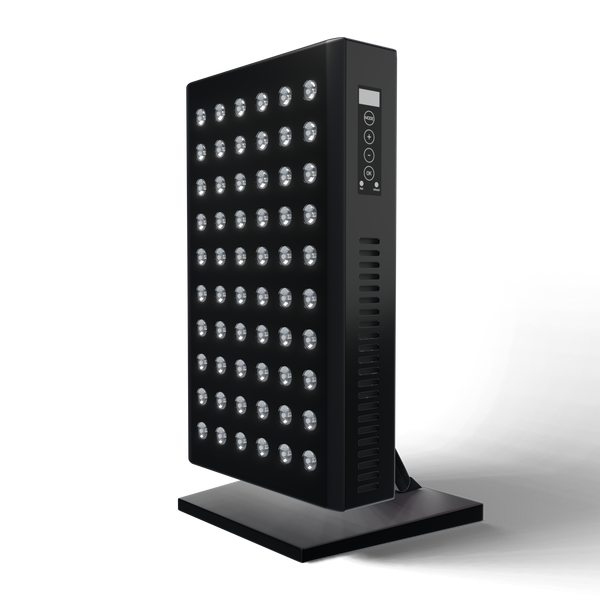
How Does Light Therapy Work? A Comprehensive Explanation
In the quest for holistic health and wellness solutions, light therapy has emerged as a beacon of hope for many. With roots that trace back to ancient civilizations, the modern incarnation of light therapy combines age-old wisdom with cutting-edge science to offer a non-invasive treatment option for a myriad of conditions.
From combating skin disorders to uplifting moods and improving sleep patterns, the application of light therapy spans a broad spectrum of health concerns. But how does light therapy work, and what makes it so effective? This comprehensive guide delves into the heart of light therapy, shedding light on its mechanisms, benefits, and how to harness its powers safely and effectively.
What is light therapy?
Light therapy, also known as phototherapy or heliotherapy, involves the use of specific wavelengths of light to help manage various medical and cosmetic conditions. This therapy leverages the natural power of light to trigger biological processes in the body, leading to therapeutic effects. The most common types of light used in therapy include:
- Ultraviolet (UV) light: is used to address skin conditions such as psoriasis, eczema, and vitiligo.
- Visible light: particularly blue and red light, is used for acne management and skin rejuvenation.
- Infrared light is employed for pain relief management, wound healing, and muscle relaxation.
Light therapy can be administered in different forms, such as through light boxes, lamps, handheld devices, or even full-body chambers.
The Science Behind Light Therapy
At the core of light therapy is the principle that light can influence cellular functions. When light penetrates the skin, it is absorbed by photoreceptors in the cells, leading to a cascade of molecular events. Here's a simplified breakdown of the process:
- Absorption: Light photons are absorbed by chromophores, which are light-sensitive molecules in cells.
- Activation: The absorbed energy activates photoreceptors, leading to changes in cellular behavior.
- Response: These changes can stimulate the production of ATP (adenosine triphosphate), the energy currency of the cell, and influence the release of various signaling molecules like cytokines and growth factors.
The specific effects of light therapy depend on the wavelength, intensity, and duration of the exposure. Different wavelengths penetrate the skin to varying depths and have distinct biological effects.
Mechanisms of Light Therapy
Light therapy works through several mechanisms, each targeting different aspects of cellular and physiological processes:
- Photobiomodulation: This is the primary mechanism behind light therapy. It involves the modulation of cellular activity through light, leading to enhanced cell proliferation, migration, and adhesion.
- Circadian Rhythm Regulation: Exposure to bright light, especially in the morning, can help synchronize the body's internal clock, improving sleep patterns and mood.
- Anti-inflammatory Effects: Certain wavelengths of light can reduce inflammation by inhibiting the production of pro-inflammatory cytokines.
- Stimulation of Collagen Production: In the context of skin health, light therapy can stimulate fibroblasts to produce more collagen, leading to improved skin texture and reduced signs of aging.
Types of Light Therapy
Light therapy can be categorized based on the type of light used and the conditions it aims to regulate. Here are some common types:
- UV Light Therapy: Also known as phototherapy, it uses ultraviolet light to help manage skin conditions like psoriasis, eczema, and vitiligo. It's often administered in a controlled environment under medical supervision.
- Blue Light Therapy: Primarily used for acne management, blue light therapy targets the bacteria that cause acne, reducing inflammation and preventing new breakouts.
- Red Light Therapy: Known for its anti-aging and wound healing properties, red light therapy stimulates collagen production, improves skin elasticity, and accelerates tissue repair.
- Infrared Light Therapy: Used for pain relief and muscle relaxation, infrared light penetrates deeper into the body, promoting circulation and reducing inflammation.
- Bright Light Therapy: Commonly used to regulate seasonal affective disorder (SAD) and other circadian rhythm-related disorders, bright light therapy involves exposure to intense light to regulate the body's internal clock.
Benefits of Light Therapy
Light therapy offers a range of benefits for both physical and mental health:
- Skin Health: Improves skin tone, texture, and elasticity; reduces acne, wrinkles, and age spots.
- Mood Enhancement: Effective in managing SAD, depression, and sleep disorders by regulating serotonin and melatonin levels.
- Pain Relief: Alleviates chronic pain, arthritis, and muscle soreness through increased circulation and reduced inflammation.
- Wound Healing: Accelerates the healing process of wounds, cuts, and burns by stimulating cell regeneration.
- Immune System Boost: Enhances the body's natural defense mechanisms, potentially reducing the risk of infection.
Light Therapy for Skin Conditions
Light therapy has gained popularity as a way of addressing various skin conditions, offering a non-invasive alternative to traditional methods. Here's how it works for different skin issues:
Acne:

- Blue light therapy: targets the bacteria that cause acne, reducing inflammation and preventing new breakouts.
- Red light therapy: promotes healing and reduces inflammation, helping to clear acne scars and improve skin texture.
Psoriasis:

- UVB phototherapy: exposes the skin to ultraviolet B (UVB) light, slowing down the growth of affected skin cells and reducing the severity of psoriasis plaques.
Eczema:
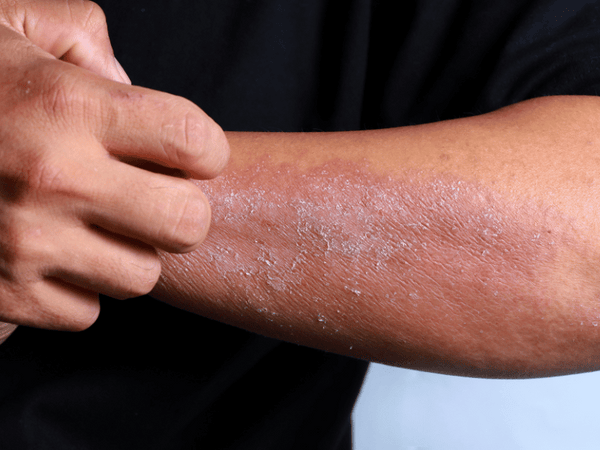
- UVB Phototherapy: Similar to psoriasis treatment, it helps reduce itching, inflammation, and the number of eczema flare-ups.
Aging and sun damage:
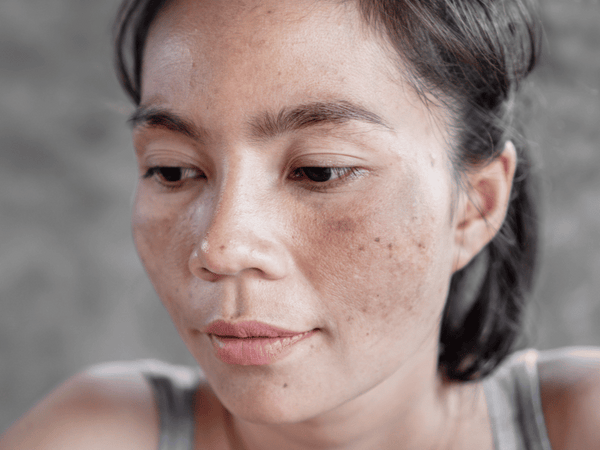
- Red and infrared light therapy: help stimulates collagen production, reducing the appearance of fine lines, wrinkles, and sun spots.
Rosacea:
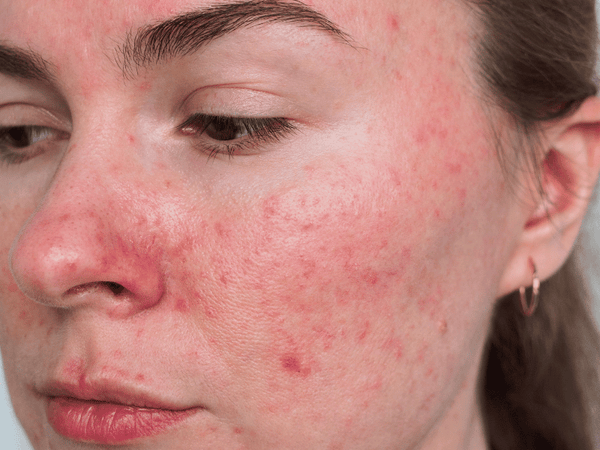
- Intense Pulsed Light (IPL) Therapy: Helps reduce and manage redness and visible blood vessels associated with rosacea.
Vitiligo:
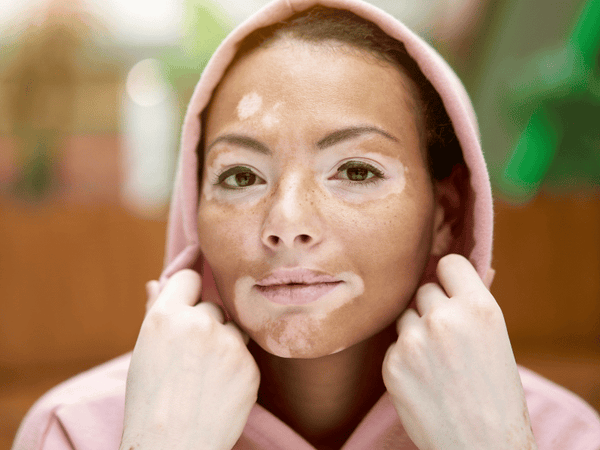
- Narrowband UVB phototherapy can help repigment the skin by stimulating melanocytes, the cells responsible for skin color.
Disclaimer: When considering light therapy for skin conditions, it's crucial to consult with a dermatologist or healthcare professional to determine the most appropriate treatment plan and ensure safety.
Light Therapy for Mental Health
Light therapy has shown promising results in addressing various mental health issues, particularly those related to mood and sleep disorders. Here's how it can help:
Seasonal Affective Disorder (SAD):
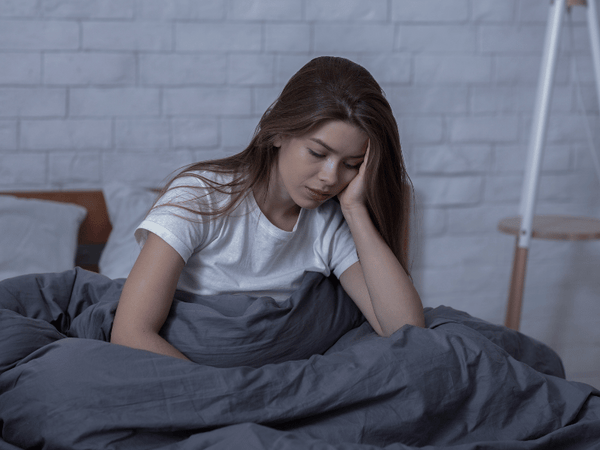
- Bright Light Therapy: Exposure to bright light, especially in the morning, can help alleviate symptoms of SAD by regulating the body's internal clock and balancing serotonin levels.
Depression:

- Bright Light Therapy: Used as an adjunct therapy for non-seasonal depression, it can improve mood and energy levels by influencing neurotransmitter pathways.
Sleep Disorders:
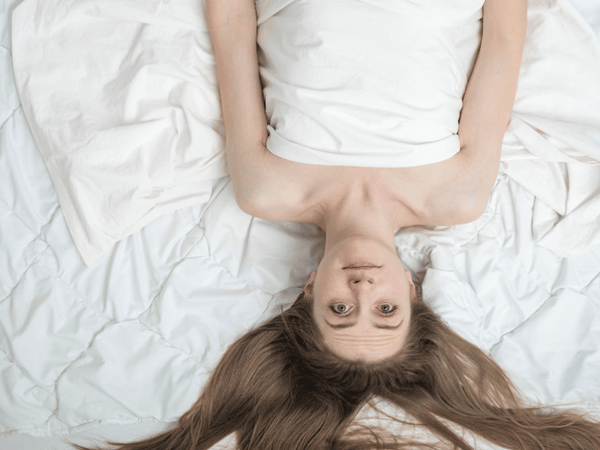
- Circadian Rhythm Regulation: Light therapy can help reset the body's internal clock, improving sleep patterns in conditions like insomnia, delayed sleep phase disorder, and jet lag.
Anxiety:

- Red and Blue Light Therapy: Some studies suggest that red and blue light therapy may help reduce anxiety symptoms by modulating brain activity and promoting relaxation.
Disclaimer: It's important to note that, while light therapy can be an effective complementary treatment for mental health issues, it should not replace traditional therapies or medications prescribed by a mental health professional. Always consult with a healthcare provider before starting light therapy for mental health conditions.
How to Use Light Therapy
To ensure the effectiveness and safety of light therapy, it's important to follow these guidelines:
- Consult a Professional: Before starting light therapy, consult with a healthcare provider to determine the appropriate type and duration of treatment.
- Use the right device: Choose a light therapy device that emits the correct wavelength and intensity for your specific condition.
- Follow a schedule. Consistency is key. Use the device at the same time each day for the recommended duration.
- Protect Your Eyes: Wear protective eyewear if recommended, especially when using UV or bright light therapy.
- Monitor Your Response: Keep track of your symptoms and any side effects, and adjust the treatment as needed.
Risks and Side Effects
While light therapy is generally safe, some individuals may experience side effects, including:
- Skin irritation: redness, itching, or a mild burning sensation, especially with UV light therapy.
- Eye Strain: Bright light therapy can cause eye strain or headaches in some people.
- Mania: Individuals with bipolar disorder may experience manic episodes if using bright light therapy without proper medical supervision.
It's important to discuss any potential risks with a healthcare professional before starting light therapy.
Best Practices for Light Therapy
Adhering to best practices can enhance the effectiveness of light therapy and minimize risks. Here are some key recommendations:
- Personalization: Tailor the duration, timing, and intensity of light therapy sessions to your individual needs and health conditions. Personalization ensures maximum benefits and reduces potential side effects.
- Start Gradually: Begin with shorter sessions and gradually increase the duration as your body adjusts to the treatment. This approach helps mitigate any initial discomfort or side effects.
- Maintain Consistency: Regularity is crucial for light therapy to be effective. Aim to conduct your sessions at the same time each day to help regulate your body's internal clock, especially for conditions like SAD.
- Combine with Lifestyle Changes: Light therapy is most effective when combined with healthy lifestyle choices, such as maintaining a balanced diet, exercising regularly, and managing stress.
- Monitor Progress: Keep a diary of your symptoms and any side effects experienced during the course of treatment. This record can help you and your healthcare provider make informed adjustments to the therapy.
How to Choose the Right Light Therapy Device
When considering light therapy, it's essential to choose the right device to ensure safety and effectiveness. Here are some factors to consider:
- Type of Light: Different conditions may require different types of light. For example, blue light is often used for acne treatment, while red light is used for skin rejuvenation and pain relief. Consult with a healthcare professional to determine the appropriate type of light for your needs.
- Intensity: The intensity of the light, measured in lux for visible light therapy or milliwatts per square centimeter for LED therapy, is crucial. devices should provide the recommended intensity for the specific condition being treated.
- Size and Coverage: Consider the size of the device and the area of the body it can cover. Larger devices may be more suitable for treating conditions like psoriasis or eczema, which can affect larger areas of the skin.
- Safety Features: Look for devices with safety features such as automatic shut-off timers, UV filters (if applicable), and adjustable intensity settings.
- FDA Clearance: For medical conditions, it's advisable to choose devices that have been cleared by the U.S. Food and Drug Administration (FDA) as this indicates that they have been tested for safety and efficacy.
- User Reviews and Recommendations: Reading user reviews and seeking recommendations from healthcare professionals can provide insight into the effectiveness and ease of use of different devices.
- Cost and Warranty: Consider the cost of the device and whether it comes with a warranty or satisfaction guarantee. While more expensive devices may offer additional features or higher quality, it's important to find a balance between cost and effectiveness.
By carefully considering these factors, you can select a light therapy device that is safe, effective, and suitable for your specific needs.
KOZE™ Mini:
The KOZE™ Mini is a compact and versatile light therapy device crafted to deliver the benefits of phototherapy directly to your home or office. This portable device is perfect for those seeking a convenient solution to improve mood, enhance sleep, or boost skin health.
With its sleek and minimalist design, the KOZE™ Mini seamlessly integrates into any space, making it ideal for on-the-go use or as a stylish addition to your wellness routine.
Featuring a variety of light settings, it allows you to personalize your therapy session to meet your specific needs, whether it's combating seasonal affective disorder (SAD), reducing acne, or simply unwinding after a long day. Embrace the power of light therapy with the KOZE™ Mini and take the first step towards a brighter, healthier you.
Koze S Series:
The Koze S Series represents a cutting-edge light therapy system crafted to meet the evolving needs of today's wellness enthusiasts. This advanced series boasts a range of customizable features, allowing users to personalize their light therapy experience according to their specific health and wellness objectives.
With its sleek and sophisticated design, the Koze S Series seamlessly blends into any home or professional environment, adding a touch of elegance while providing potent therapeutic benefits.
Whether you seek to enhance your skin complexion, uplift your mood, or improve your sleep, the Koze S Series offers a solution that is both effective and visually appealing. Embrace the future of light therapy with the Koze S Series and elevate your well-being to new heights.
Koze X Series:
The Koze X Series embodies the epitome of light therapy technology, delivering an unmatched experience for those in search of the ultimate wellness innovation. This premium series merges cutting-edge design with advanced features to offer a comprehensive solution for a wide array of health and wellness needs.
With its powerful and customizable light settings, the Koze X Series is designed to target specific concerns such as stress reduction, improved sleep quality, and enhanced skin health.
Its user-friendly interface and sleek, contemporary aesthetics make it a standout addition to any home or professional setting. Whether you're a seasoned light therapy enthusiast or new to the concept, the Koze X Series provides a sophisticated and effective means to enhance your overall well-being and embrace a healthier lifestyle.
Future Directions of Light Therapy
The field of light therapy is evolving, with ongoing research exploring new applications and optimizing existing treatments. Future directions include:
- Personalized Medicine: Developing more tailored light therapy protocols based on individual genetic profiles and specific health conditions.
- Technology Integration: Incorporating light therapy devices with smart technology to monitor treatment effectiveness and adjust protocols in real time.
- Expanded Applications: Investigating the use of light therapy for a broader range of conditions, including cognitive disorders, sleep disturbances, and immune system enhancement.
Light therapy continues to offer promising solutions for a variety of health issues, with the potential for even greater benefits as research advances.
Conclusion
Light therapy is a versatile and non-invasive treatment option that has shown promise in addressing a variety of physical and mental health conditions. From alleviating symptoms of seasonal affective disorder to promoting wound healing and reducing inflammation, the applications of light therapy are diverse. Understanding how light therapy works, its benefits, and the different types available can help individuals make informed decisions about incorporating this treatment into their healthcare regimen.
When considering light therapy, it's important to choose the right device, taking into account factors such as the type of light, intensity, and safety features. Consulting with a healthcare professional can provide guidance on the most appropriate form of light therapy for your specific condition and ensure that the treatment is administered safely and effectively.
As research continues to uncover the mechanisms and potential applications of light therapy, it is likely that this treatment will become an increasingly popular and accessible option for improving health and well-being.
FAQs
What is light therapy?
Light therapy, also known as phototherapy, is a treatment that involves exposure to specific wavelengths of light to address various health conditions. It is commonly used to treat skin disorders, sleep disorders, and mood disorders, among others.
How does light therapy work?
Light therapy works by exposing the body to artificial light that mimics natural sunlight or by using specific wavelengths of light to trigger biological processes. This can influence the production of hormones and chemicals in the body that regulate mood, sleep, and skin health.
Is light therapy safe?
Light therapy is generally considered safe when used under the guidance of a healthcare professional. However, individuals with certain conditions or sensitivities to light may experience side effects. It is important to use light therapy devices according to the manufacturer's instructions and consult a healthcare professional before starting treatment.
What conditions can light therapy treat?
Light therapy is used to treat a variety of conditions, including seasonal affective disorder (SAD), sleep disorders, skin conditions like psoriasis and eczema, and certain types of depression. It is also being explored as a treatment for other conditions, such as chronic pain and wound healing.
How long does a light therapy session last?
The duration of a light therapy session can vary depending on the condition being treated and the intensity of the light. Sessions typically last between 20 minutes to an hour and may be conducted daily or several times a week.
Can light therapy be used at home?
Yes, light therapy can be used at home with the appropriate devices. It is important to choose a light therapy device that is specifically designed for the condition you are treating and to follow the manufacturer's instructions carefully.
Are there any side effects of light therapy?
Some individuals may experience mild side effects from light therapy, such as eye strain, headaches, nausea, or irritability. These side effects are usually temporary and can often be mitigated by adjusting the duration or intensity of the treatment.
Do I need a prescription for light therapy?
In most cases, you do not need a prescription for light therapy devices used for conditions like SAD or mild skin issues. However, for more serious conditions or if you are unsure about whether light therapy is right for you, it is best to consult a healthcare professional.
Resources
Websites:
- National Institute of Mental Health (NIMH): https://www.nimh.nih.gov]
- Provides information on seasonal affective disorder (SAD) and the use of light therapy.
- American Academy of Dermatology (AAD): https://www.aad.org
- Offers resources and information on various skin conditions and treatments, including light therapy.
- Sleep Foundation: https://www.sleepfoundation.org
- Provides information on how light therapy can be used to treat sleep disorders.
Research Articles:
- "Light therapy for non-seasonal depression: systematic review and meta-analysis" - British Journal of Psychiatry.
- "Efficacy of light therapy in the treatment of seasonal affective disorder: A systematic review and meta-analysis of randomized controlled trials" - Journal of Affective Disorders.
- "Phototherapy in the treatment of acne vulgaris: What is its role?" - American Journal of Clinical Dermatology.
Books:
- "Winter Blues: Everything You Need to Know to Beat Seasonal Affective Disorder" by Norman E. Rosenthal, MD.
- A comprehensive guide to understanding and managing SAD, including the use of light therapy.
- "Healing Light: The Miracle of Cold Laser Therapy by Larry Lytle.
- Explores the science and application of low-level laser therapy for various health conditions.
Organizations:
- Center for Environmental Therapeutics (CET): https://www.cet.org
- A non-profit organization dedicated to research and education on environmental therapies, including light therapy.
- Society for Light Treatment and Biological Rhythms (SLTBR): https://sltbr.org
- An international organization focused on the study of biological rhythms and the application of light therapy.

